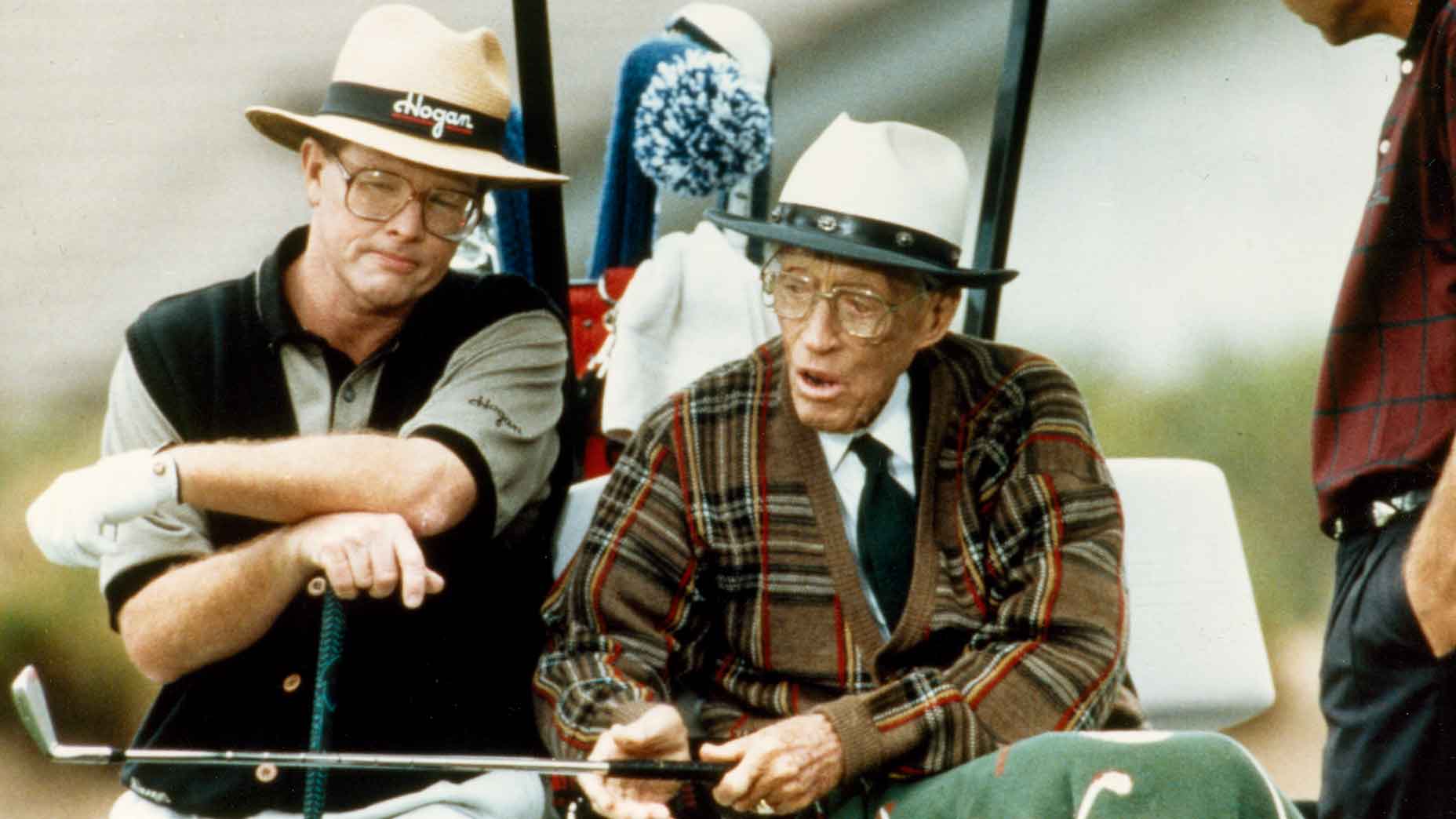
With the PGA Tour heading to Harvey Penick's hometown of Austin this week, we look back at eight of his best tips.
Getty Images
Few golf instructors have been able to simplify the game quite like Harvey Penick.
For seven decades the soft-spoken Texan taught the game at Austin Country Club in a way that few could — straightforward and uncomplicated, but with incredible effectiveness. And though Penick’s life ended in 1995, his teachings still live on.
Prior to his death, Penick teamed up with renowned Austin-based journalist Bud Shrake; the two became a prolific team, writing four instruction books in the legendary teacher’s final years, headlined by Harvey Penick’s Little Red Book.
The Little Red Book is full of lessons and wisdom on the game from Penick’s perspective, and its become one of the top golf instruction books of all time.
In the lead up to the PGA Tour’s stop at Penick’s home club for the Dell Match Play, we have been looking back at some of his best tips from the book. Check out below for an overview of eight simple tips that will effortlessly lower your scores.
1. How to lower your handicap by five strokes
“If you want to see radical improvement in your game and cut off five strokes in a week or two, you must make a radical change in the way you practice,” Penick said. “For two weeks devote 90 percent of your practice time to chipping and putting, and only 10 percent to the full swing. If you do this, your 95 will turn into 90. I guarantee it.”
Read more here.
2. What golfers get wrong about practice swings
“Aiming at something with your practice swing will help you learn to square the clubface,” Penick said. “Never take another practice swing without aiming at something.”
Read more here.
3. How to hit a perfect bunker shot
“Play the ball with the shaft poining at your zipper and your hands slightly ahead,” Penick said. “Take a square stance and open your clubface so it points right of the target.”
In recent decades players have more often opened their stances slightly by moving their lead foot back, taking their hips and shoulders with it. This will make your body aimed left of the target (for a right-handed player) and your clubface pointed directly at the target. Finally, favor your weight on your front foot.
Now it’s as easy as making a normal swing, but with one key caveat — hit three or four inches behind the ball.
Read more here.
4. Two most important psychological elements of golf
“Psychologically, the driver is very important,” Penick wrote in his Little Red Book. “If you hit your tee ball well, it fills you with confidence. On the other hand, if you smash a couple drives into the trees, your confidence can be shaken.”
Once your ball finds the short grass from the tee box, you should be filled with confidence, but your best opportunity to inflate that self belief comes when you reach the green. Holing short putts is the only thing better for confidence than hitting a solid drive.
“Sinking putts makes your confidence soar, and it devastates your opponent,” Penick said. “A good putter is a match for anyone. A bad putter is a match for no one.”
Read more here.
5. Dispelling the biggest golf swing myth
“When I say bring your right arm back to your side, I mean on the downswing — not the backswing,” Penick wrote in his Little Red Book. “Students come to me with all sorts of weird ideas they have been taught. They try to swing with a towel under their right armpit. Their right elbow is practically strapped to their body. The result is a swing that is too short and flat.”
Instead, Penick suggests letting your right elbow go back freely, but returing it back to your side when you initiate the downswing.
Read more here.
6. Swing harder to hit your approach shots better
Instead of clubbing up, Penick said, try to hit the ball harder. Take the shorter club, but swing aggressive.
“When you take a stronger club and try to hit it easy, your muscles will involuntarily tell you that you are using the wrong club, and you are likely to flinch and pull up on the shot,” he said. “If you want to hit the stronger club anyway, grip down an inch on the handle — and go ahead and hit it hard.”
Read more here.
7. How to tell where you’re *really* aimed
A popular method for checking your aim is to place an alignment stick at your feet pointing down the line. Common wisdom says this tells you where you’re aimed, but according to Harvey Penick, it actually “tells you very little.”
“Take your stance and hold a clubshaft along the front of your thighs,” Penick wrote in his Little Red Book. “Look where the club is pointing, and you will see where you are aimed.”
Read more here.
8. The correct ball position for every club
Penick suggested to start at your lead heel for the driver and 3-wood and move back a fraction of an inch for each club until you reach your 9-iron.
“If you have any doubt where to position the ball for any iron, take a couple practice swings and note where the clubface brushes the ground,” he said. “Another way is to put your iron down on the grass with a square face, and you will see where the manufacturer designed the club to be played.”
Read more here.
https://ift.tt/uiVg60B
Tidak ada komentar:
Posting Komentar